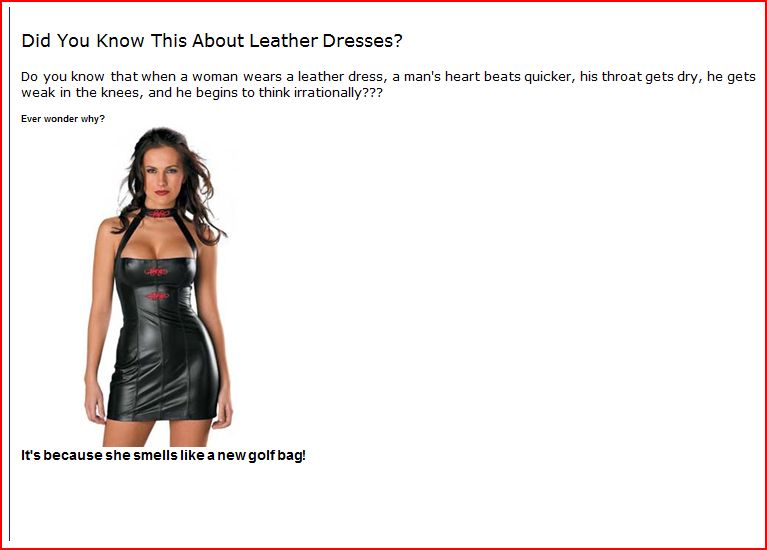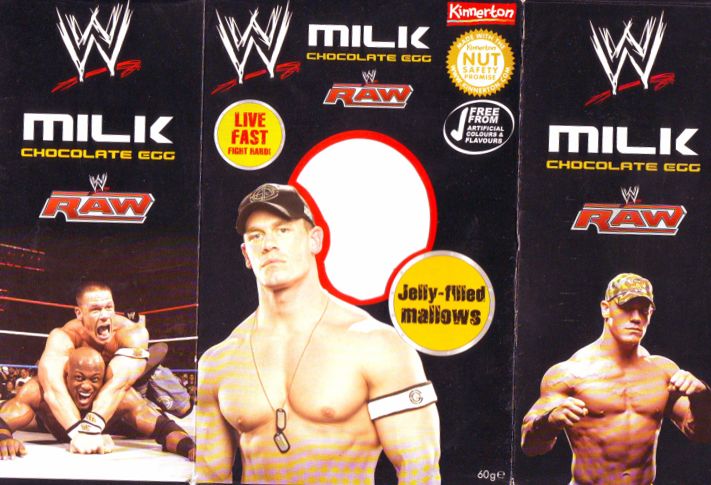Here’s another collection of images about gender and marketing of various techy things, particularly video games. You can see my other jumbled post of such images here (check out the links at the bottom of that post–I’m not going to reproduce them here).
Danielle F. found a post at bitmob that includes this old ad for Game Boy:
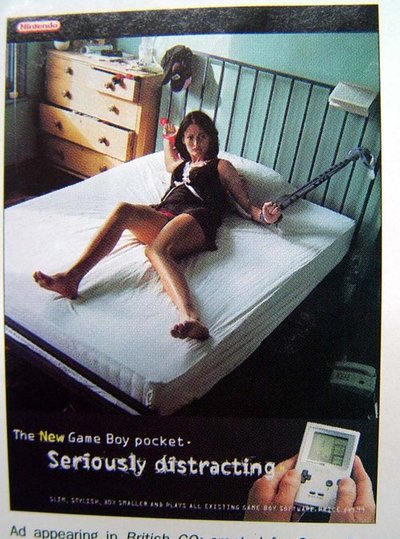
Notice that the presumed user is either a heterosexual male (or, I suppose, a lesbian…but I doubt it). And as we see, the Game Boy is so awesome it’s better than having sex with a woman tied up waiting for you. I hope the unhappy look on her face is because her partner is distracted and not because she doesn’t really want to be tied up.
NEW! Nov ’09 Another vintage example (well, 1987):

A reader who prefers to remain anonymous sent in this image he was forwarded that someone created equating different browsers with women. Again we see that the assumed user is male:

The reader says,
…notice how all the women are described primarily or entirely in terms of sexual attributes, and criticized for whatever ways they fail to be ideal sex partners…Unquestioned assumptions here…that “women” means “people whose purpose in life is to provide you with sex”. Male gaze much?
I find the Chrome image particularly icky. The equating of IE with “easy” women, who are of course the “first woman [users] tried” (because she’s not relationship material, just for getting started), and the connection to STDs is also classy.
The sender-inner continues,
Like most software companies, mine has an extremely imbalanced male-to-female ratio, maybe something around 90% male, and most of the women are in the marketing and HR departments so the balance is even further skewed among the people who engineer the software. (Full disclosure: I’m a man.) I have no way of knowing how prevalent e-mail forwards like this one are among engineers in the software industry, since most of them get passed around under the table. It makes me wonder what role they might play in perpetuating or reinforcing a “boys-only-club” kind of culture that makes women feel unwelcome, or whether that has an influence on the extreme gender imbalance of my industry.
We got several more submissions of gendered marketing of techy items. Stephanie G. sent us a link to her post at Mother Jones about Sony Ericsson’s attempt to market cell phones to women by making them “diamond” shaped:

The company claims that “structured forms, intricate corners, hidden depths” are trendy. Stephanie points out,
…”depth” refers to a “variety of different shine and matt [sic] finishes,” not tech specs.
The phone has some features that clearly illustrate stereotypes about what women (should) care about:
“The two inch screen’s clever design means that at the touch of a button the screen becomes a mirror, offering a discreet way to make sure you look as good as your mobile phone. It is also the first Sony Ericsson to feature Walk Mate step counter, to help you stay in shape wherever you go. It also has an exclusive fashion interface which automatically updates with zodiac signs and special events throughout the year.”
Liz noted the following about Ubisoft’s series of Nintendo games aimed at girls:
…includes stuff like ‘Imagine Makeup Artist’ and ‘Imagine Wedding Planner.’ Without exception every game is about physical appearance, performance for the purpose of looking pretty, or nurturing/childrearing.
If you haven’t gotten enough yet, Kate M. sent in these examples of “time management games” (what?!?) at Shockwave:



I don’t know what to make of this one:

UPDATE: Reader Shodan says, about Virtual Families and Virtual Villagers,
…in those games, male and female characters can take on dozens of roles, with males able to take on tasks that have been often portrayed as the role of women traditionally (house cleaning, child rearing) and women taking on tasks that are often portrayed as masculine masculine (research, construction).
On the other hand, I found this tip (here):
Stay at Home Moms- Nursing mothers focus all their attention on the baby for two years of game time. They won’t do any other tasks while caring for the baby.
Also this at Codeblower:
Job: Breeder
If you want (once things are progressing and you’ve got a steady food-supply, a hut or two built, and you’re working on unplugging the lagoon) you can task a couple villagers to be “Breeders”. Be advised that this is only a good idea for females. This was another accidental-discovery. I had everybody but “The Runner” set to Breeder (to get the population moving) and shut the game down for a while. I came back to discover that one of the males had decided that Runner would be a good mate — food-production had halted. Needless to say, the two men in the village were immediately tasked with Runner’s duties while the females nursed the infants.
So maybe I’m totally offbase on those two. Or maybe not.
You can also play Create a Mall, Posh Boutique 2, Diaper Dash, or a variety of games about diners, salons, and boutiques. Kate says,
Even the ones that involve you having a successful career (and saving the community! What a hero! Nurturing all of us!) don’t start off with you wanting a career – you fall into it by accident, on account of your love for your family/community/cooking/fashion.
Also see: the Sony OMG Lilac Play Station Portable, mom/daughter domesticity in a Nintendo ad, targeting the new Risk to men, and Miss Bimbo.
NEW! (July ’10): Bri A. sent in another example of gendering technology. This is an image from TeamViewer, a program that lets people remotely access your computer. Notice what it says under Info: “This number identifies you. Tell your partner so he can connect to you.” Because only guys would be using this, obviously.
Gwen Sharp is an associate professor of sociology at Nevada State College. You can follow her on Twitter at @gwensharpnv.


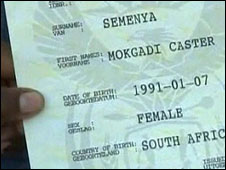
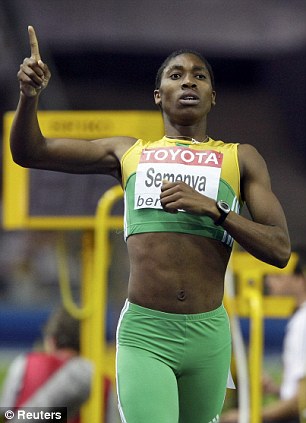







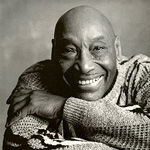 This post is dedicated to
This post is dedicated to 